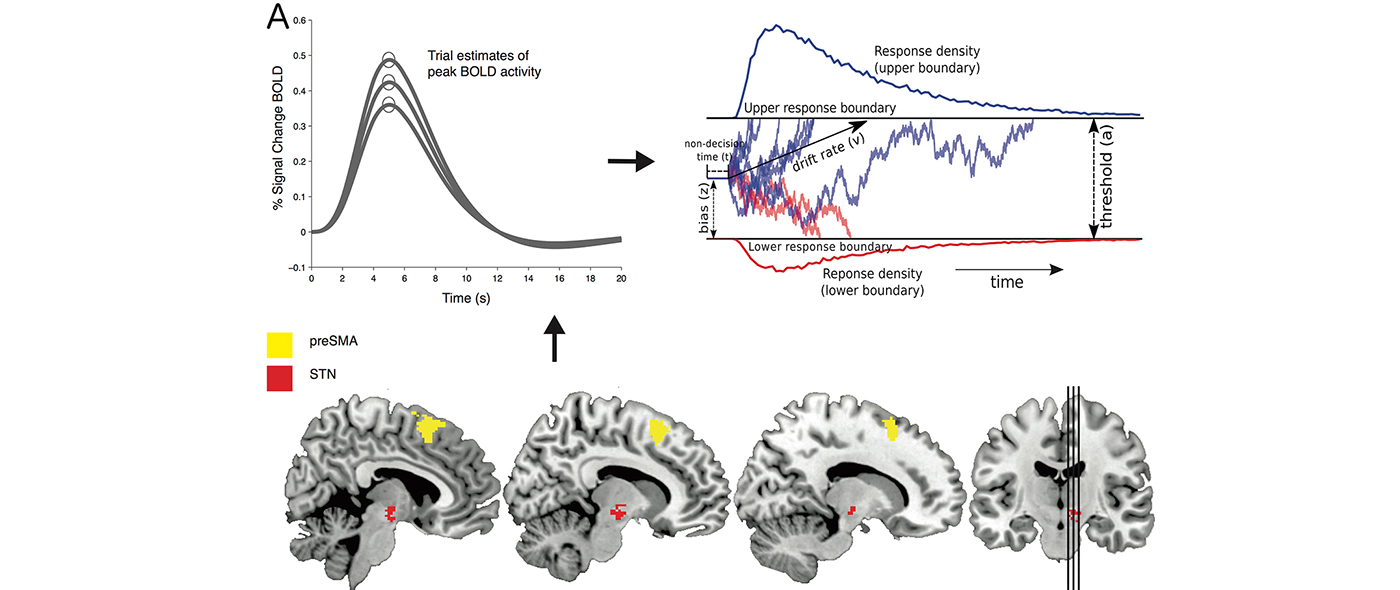Research Project
Impulsivity is a substantial risk factor for aberrant behaviors. This project seeks to understand the fundamental cognitive neuroscience mechanisms underlying distinct forms of impulsivity, using a combination of theory-driven and data-driven approaches.
 We have identified two distinct forms of impulsivity linked to different mechanisms within frontostriatal circuitry: elevations in striatal dopamine and dysfunctional communication between the prefrontal cortex and subthalamic nucleus. We develop novel methods for detecting separable alterations in these circuits via targeted cognitive tasks paired with neuroimaging, computational modeling, and machine learning approaches. We capitalize on existing large neuroimaging datasets involving more than 2000 human subjects performing reward and inhibitory control tasks and apply computational models and machine learning to discover which behavioral signatures are maximally informative about the state of underlying neural circuitry. We leverage this work to test its ability to predict the impact of manipulations acting on these mechanisms.
We have identified two distinct forms of impulsivity linked to different mechanisms within frontostriatal circuitry: elevations in striatal dopamine and dysfunctional communication between the prefrontal cortex and subthalamic nucleus. We develop novel methods for detecting separable alterations in these circuits via targeted cognitive tasks paired with neuroimaging, computational modeling, and machine learning approaches. We capitalize on existing large neuroimaging datasets involving more than 2000 human subjects performing reward and inhibitory control tasks and apply computational models and machine learning to discover which behavioral signatures are maximally informative about the state of underlying neural circuitry. We leverage this work to test its ability to predict the impact of manipulations acting on these mechanisms.
Combining neuroimaging with mathematical modeling to discover brain networks related to the regulation of impulsive decisions. 'A' Trial-to-trial estimates of neural signals from the frontal cortex (pre-SMA) and subthalamic nucleus (STN) were entered in as regressors to estimate how they alter parameters within a mathematical model of decision making. In this model noisy evidence is accumulated for one choice over another, with slope v (related to the difference in value for the two options) up to a decision boundary. B, Posterior distributions on model parameter estimates, showing that among other effects, preSMA-STN activity is related to an increase in the decision boundary, preventing impulsive choice. Peak values of each distribution represent the best estimates of each parameter, and the width of the distribution represents its uncertainty.